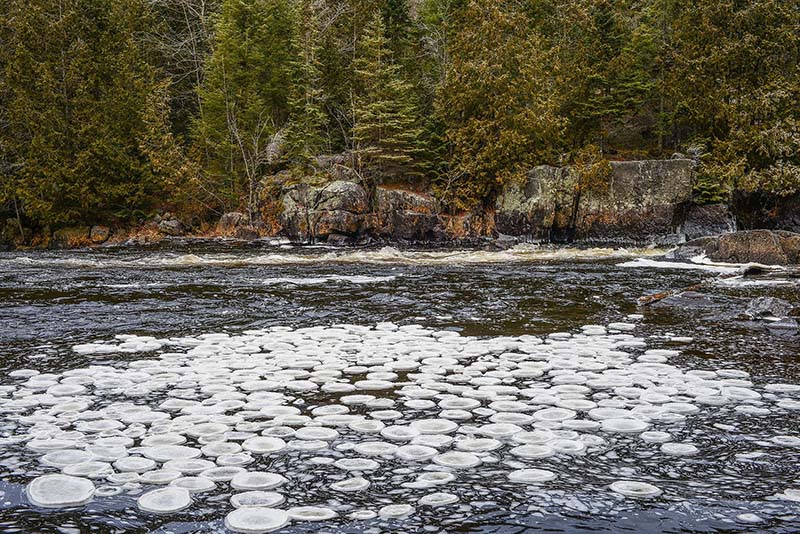

An ice disc, ice circle, or ice pan is a natural phenomenon that occurs in slow moving water in cold climates. Ice circles are thin and circular slabs of ice that rotate slowly in the water. It is believed that they form in eddy currents. Ice discs have most frequently been observed in Scandinavia and North America, but they are occasionally recorded as far south as England and Wales. An ice disc was observed in Wales in December 2008 and another was reported in England in January 2009. Ice circles vary in size but have been reported to be more than 4 metres (13 ft) in diameter.
Ice discs form on the outer bends in a river where the accelerating water creates a force called 'rotational shear', which breaks off a chunk of ice and twists it around. As the disc rotates, it grinds against surrounding ice - smoothing into a circle. A relatively uncommon phenomenon, one of the earliest recordings is of a slowly revolving disc was spotted on the Mianus River and reported in a 1895 edition of Scientific American.
River specialist and geography professor Joe Desloges states that ice pans are "surface slabs of ice that form in the center of a lake or creek, instead of along the water's edge. As water cools, it releases heat that turns into frazil ice" that can cluster together into a pan-shaped formation. If an ice pan accumulates enough frazil ice and the current remains slow, the pan may transform into a 'hanging dam', a heavy block of ice with high ridges low center.
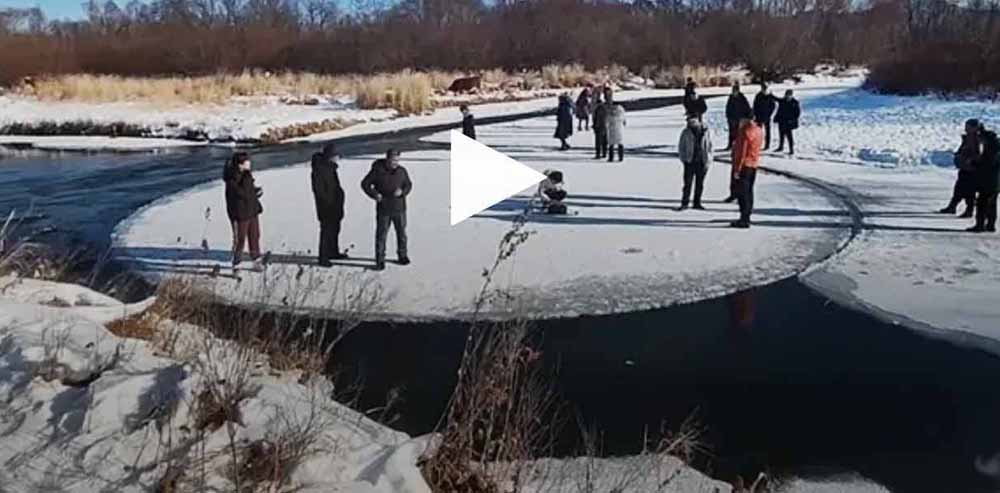
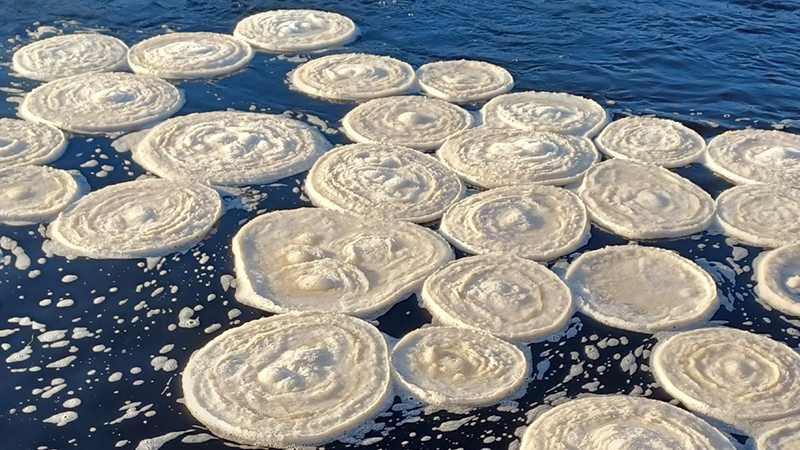
Dozens of eerily perfect circles of slushy ice, known as "ice pancakes," have been floating on the surface of a Scottish river after temperatures in the U.K. unexpectedly plummeted. Callum Sinclair, project manager for the Scottish Invasive Species Initiative (SISI), spotted the stunning circular sheets of ice Dec. 9, 2022 on the River Bladnoch in Wigtownshire, Scotland. Pictures of the peculiar pancakes taken by Sinclair were shared on the SISI Twitter (opens in new tab) page on Dec. 13, along with a short video (opens in new tab) of the icy discs bumping into one another and being washed downstream by fast-moving currents. "I've seen ice pancakes occasionally before," Sinclair told Live Science in an email. "But these were particularly interesting" because of their perfect shape, he added.
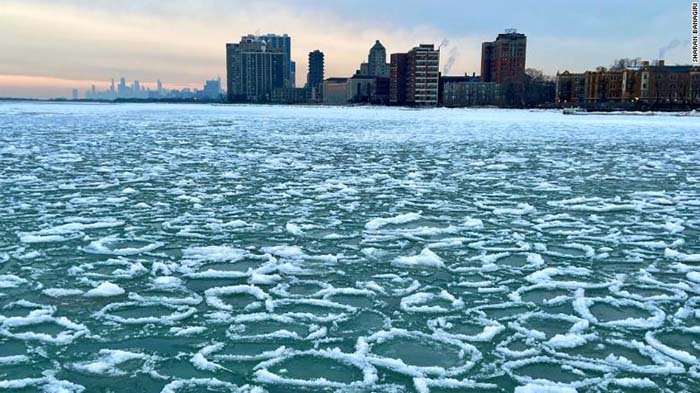
Mysterious ice formations showed up in Chicago this week CNN - January 22, 2022
You've heard of blizzards and maybe even the polar vortex, but have you heard of ice pancakes? What about ice bites or ice jams? These unique names sound fascinating but require specific weather conditions. This week ice pancakes were found along Chicago's shoreline of Lake Michigan.
Great Lakes ice coverage is currently at 21.9% which is the highest (tied with 2019) for this date in the last six years. Lake Michigan is also hovering at around 20% ice coverage, near the average to date. This time of year, because of the bitter cold temperatures across much of the northern US, peculiarities such as ice pancakes, ice bites, and ice balls pop up.
Ice pancakes, much like their namesake, look exactly like you think they would -- round flat discs made of ice. They are ommon in the Arctic but typically only start making an appearance in the Lower 48 states once the temperatures get well below freezing for several days.
The phenomenon is limited strictly to bodies of water such as rivers, lakes, or oceans. Once those bodies of water are cold enough, the chunks of ice that have started to form will knock against each other forming elliptical-shaped discs with rounded edges.
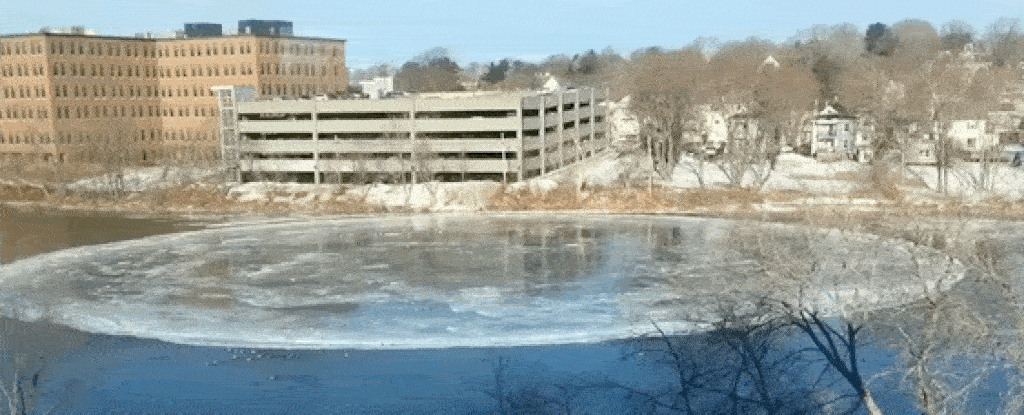
Freaky Spinning Ice Circle in Maine Looks Like a Giant Alien Landmark Science Alert - January 16, 2019
Drone Video: A spinning disc of ice measuring almost a football field in diameter has formed in the freezing waters of the Presumpscot River in Maine CNN - January 16, 2019
It's been compared to crop circles, or the strange handiwork of aliens. Others say it looks like the Moon, if it somehow materialised in the chilly waters of the Presumpscot River. But this massive churning formation in the city of Westbrook, Maine isn't evidence of something from outer space, but rather a bizarre and brilliant example of a natural terrestrial phenomenon called an ice disc. These strange, spinning spectacles are incredibly rare sightings, but even so, this one - estimated to measure about 90 metres (300 ft) across - is a giant amongst its little-seen kind.
A drone video, shot in Shenyang City of northeast China's Liaoning Province shows several tourists standing on a huge ice disc rotating clockwise in a frozen river.
A Finnish inventor, Janne Kapylehto has created an ice carousel by cutting a large circle out of ice covering a lake in Lohja. The sheet of ice was cut using a chainsaw and spins in a circular motion. Kapylehto’s friends are making the most of his invention. The inventor is planning to build a bigger better replica spanning 50 metres and equipped with a sauna, in Helsinki.
Amazing Ice Circle Appears On River Live Science - November 26, 2013
A spinning ice disk spotted on the Sheyenne River in North Dakota is a totally natural phenomenon and not the work of aliens or secret government spies, according to reports. Retired engineer George Loegering saw the giant frozen circle on Saturday (Nov. 23) while on a hunting trip with relatives, the Associated Press reported. About 55 feet (17 meters) around, the icy disk was spinning in the river current like a record on a turntable. The massive pancake-shaped ice pans often turn up on flowing rivers in cold climates. Video and photos posted online show similar disks discovered in Canada, England and Sweden during winter.
Theories abound to explain their formation. National Weather Service forecasters told the Associated Press that the Sheyenne giant likely appeared because cold, dense air slowly froze the river surface in bits and pieces. The floating ice chunks were trapped in a river eddy, creating the rotating circle discovered by Loegering. In 1993, MIT researchers who sought to explain smaller ice swirls on Boston's Charles River also suggested current-driven eddies.
By Tuesday, the twirling had ground to halt but the circular shape of the disk was still visible in the river, Loegering said. "I'm not sure how long it was there (spinning)," he told the AP. "It had to be quite a long time. If you look at the picture, you can see growth rings on the disk."
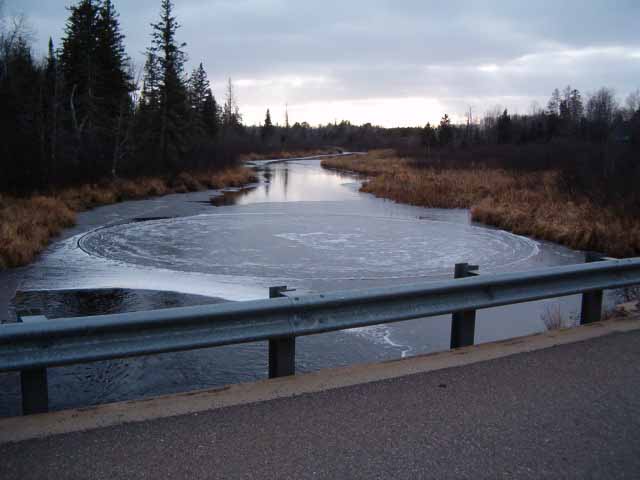
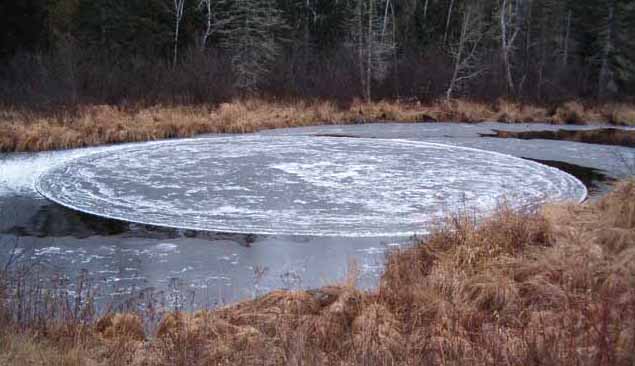
An ice circle has recently appeared on the Hemlock River located near Amasa, Michigan. December 26, 2006, a man was coming home from work at 12:45 AM and noticed pulsating lights as he turned off US 141 onto Townline Road which crosses the Hemlock River. As he approached the hill which breaks into the river basin, the lights disappeared. Thinking he was just going crazy he went home and went to bed. The next morning he drove down to the bridge and found a perfect circle about 50' in diameter cut into the ice that was rotating clockwise. Due to the man witnessing vibrating beam of lights around the area where the ice circle was discovered, researchers are looking for a possible connection between the two. We must also realize that ice circles can be made by natural currents in a stream or river.